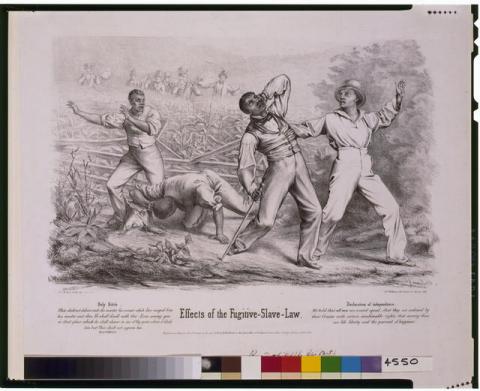American law protected slave owners at the expense of black people. Because slaves were "property," who were supposed to work in the cotton fields (or do whatever else their "masters" directed), they could be hunted down and returned to their "owner" if they tried to escape. Image online, courtesy Library of Congress.
Cotton was “King” of all crops in the antebellum south. Slaves were involved at every step from growing, to processing, to shipping this key crop.
- Plowing fields and picking cotton on cotton plantations were major jobs for American slaves.
- Preparing cotton for the gin on Smith’s plantation was a typical scene after the cotton was harvested.
- In 1863, slaves load cotton, marked “CSA” (Confederate States of America), on the river boat “Tatum.”
- It wasn’t just overseers, or male “masters,” who punished workers as this drawing of a white mistress, whipping a black slave girl, demonstrates.
- Before a beating, slaves were often hung from the ceiling with their hands and feet bound. The next step was the cowhide lash on their backs.
- Stacking wheat - another important crop - was the job of slaves in Culpeper, Virginia.
- Wilson Chinn, a slave from Louisiana, bears the marks of branding and torture.
- Some slaves who escaped the South became soldiers for the North. The March 14, 1863 edition of Harper’s Weekly depicts First Buffalo soldiers in training. It is likely these men reached freedom by means of the Underground Railroad.
How, exactly, did African-Americans escape? How did the Underground Railroad actually work?


 Back
Back
 Next Chapter
Next Chapter

 Back
Back
 Next Chapter
Next Chapter

